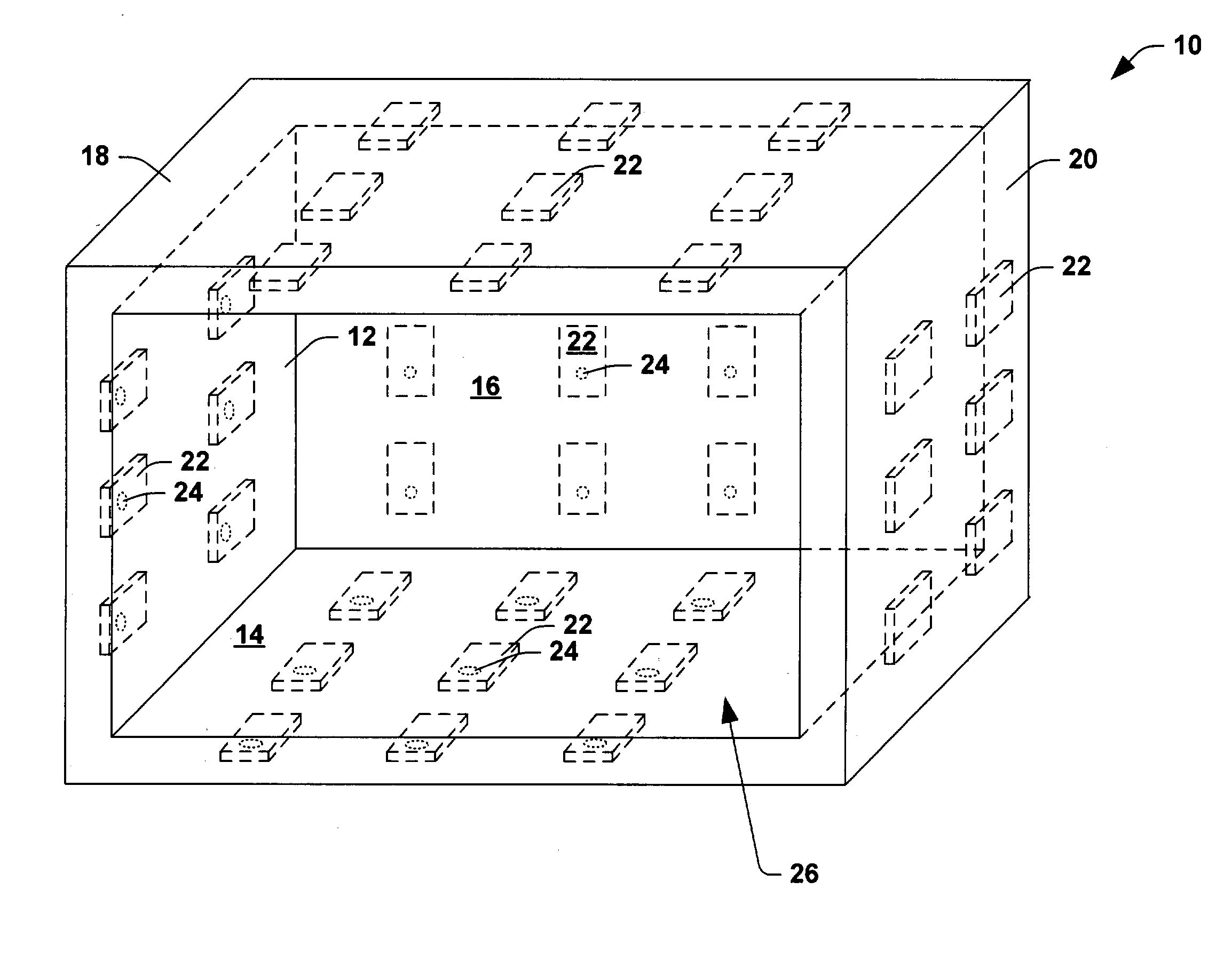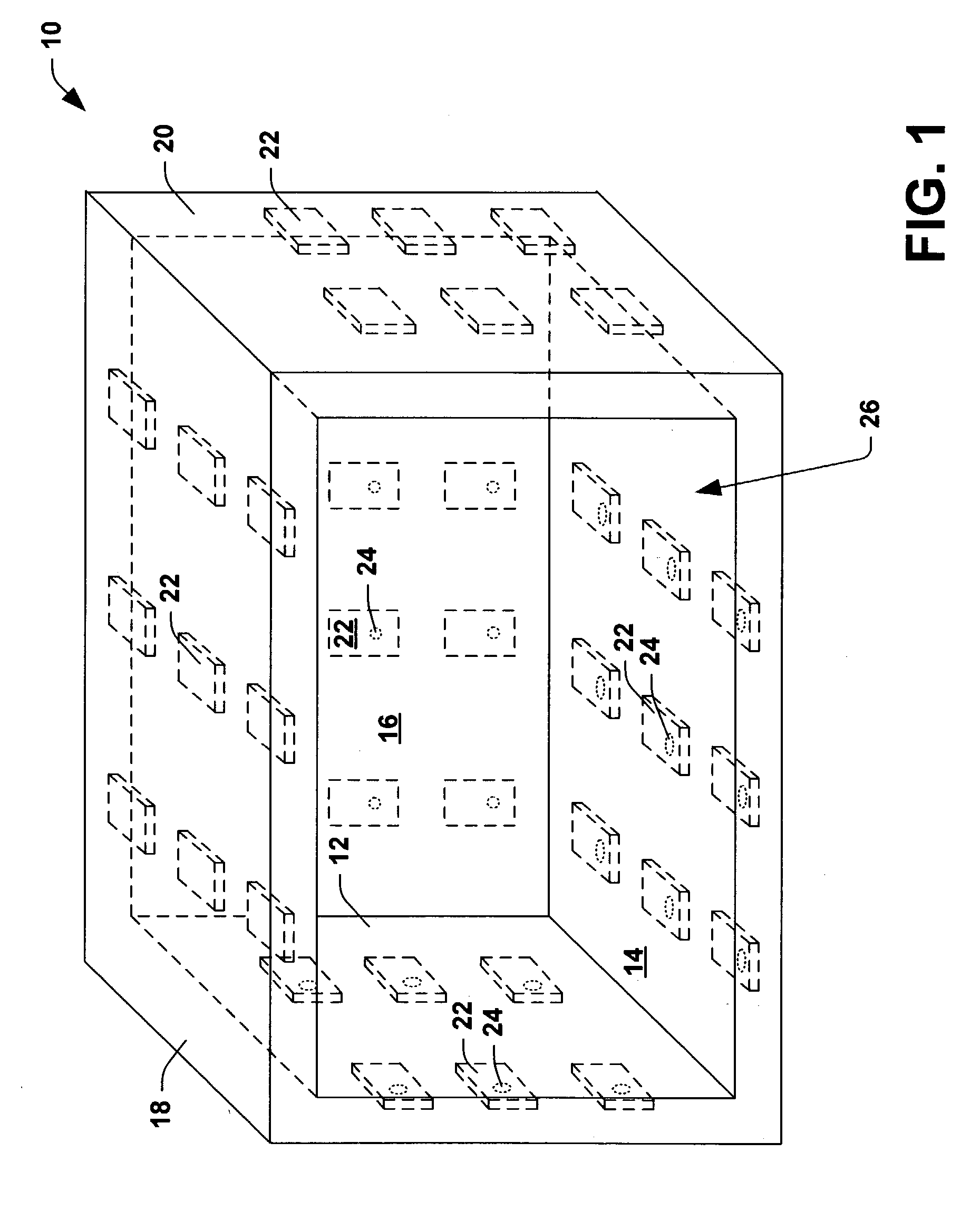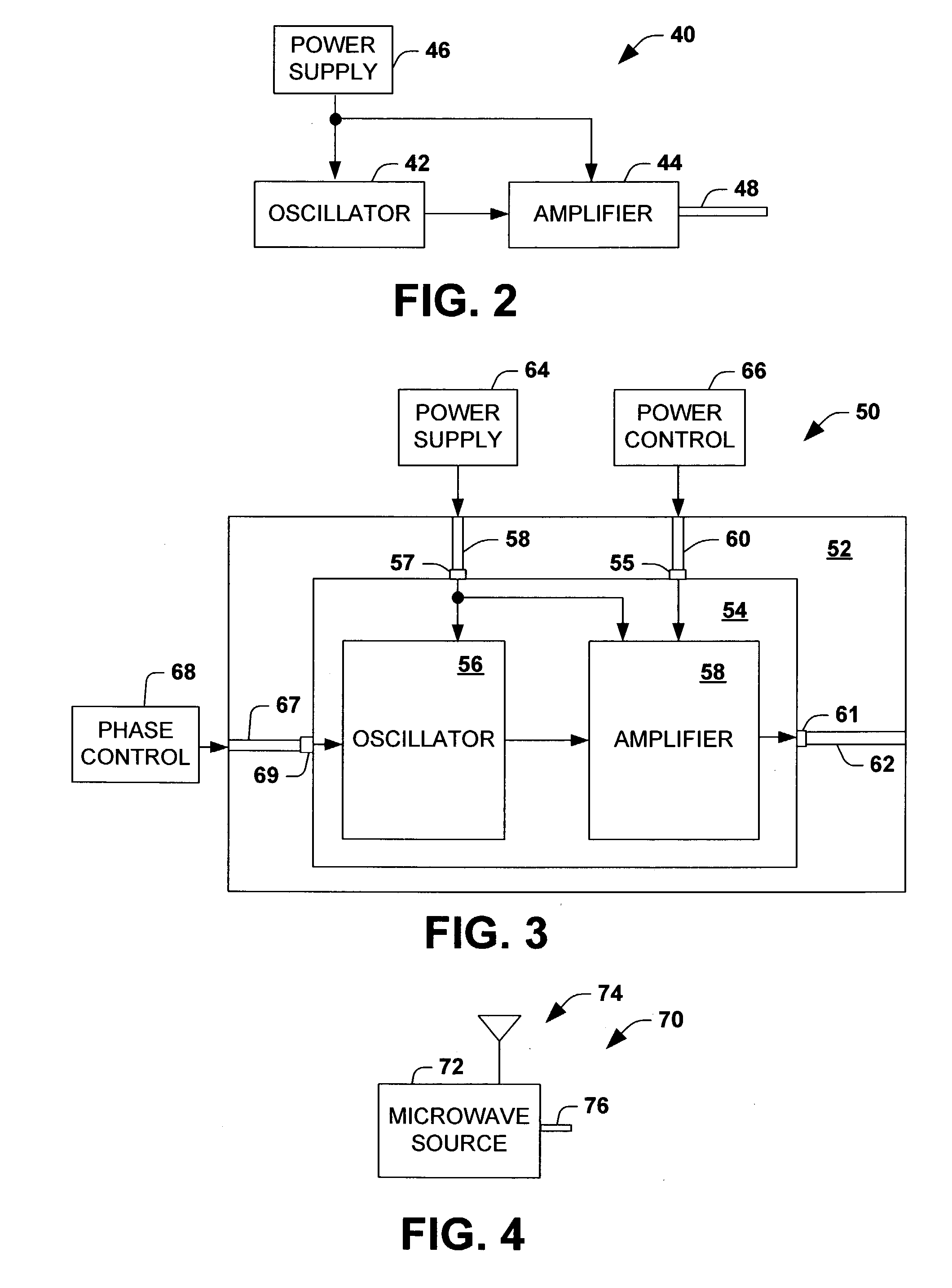Microwave heating using distributed semiconductor sources
a technology of distributed semiconductors and microwaves, applied in the direction of climate sustainability, domestic cooking appliances, sustainable buildings, etc., can solve the problems of inability to easily control the efficiency of power level, limit the known sources of microwave radiation, and limit the heating chamber to be small in comparison to the outside dimensions of the oven itsel
- Summary
- Abstract
- Description
- Claims
- Application Information
AI Technical Summary
Benefits of technology
Problems solved by technology
Method used
Image
Examples
Embodiment Construction
[0022] The present invention relates to the employment of distributed high power solid state microwave sources to provide more efficient microwave heating applications. Solid state devices capable of efficient high-power microwave operation are now being developed, primarily for radar and communications applications. The state solid microwave sources are provided employing an oscillator that operates in a microwave frequency range coupled to a high power amplifier that amplifies the microwave signal from the milliwatt range to the watt range. The high power amplifier is coupled to a radiating element (e.g., antenna, probe) that directs the microwave energy toward an article to be heated.
[0023] A plurality of solid state microwave sources can be distributed throughout and / or adjacent to a microwave chamber with the microwave power output of each solid state microwave directed toward the chamber. The distribution of the plurality of solid state microwave devices can be customized to t...
PUM
 Login to View More
Login to View More Abstract
Description
Claims
Application Information
 Login to View More
Login to View More - R&D
- Intellectual Property
- Life Sciences
- Materials
- Tech Scout
- Unparalleled Data Quality
- Higher Quality Content
- 60% Fewer Hallucinations
Browse by: Latest US Patents, China's latest patents, Technical Efficacy Thesaurus, Application Domain, Technology Topic, Popular Technical Reports.
© 2025 PatSnap. All rights reserved.Legal|Privacy policy|Modern Slavery Act Transparency Statement|Sitemap|About US| Contact US: help@patsnap.com



